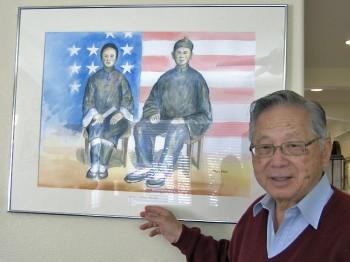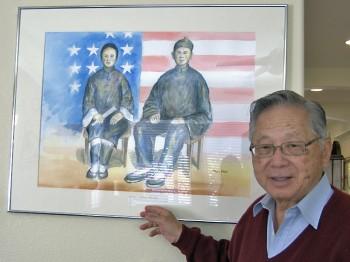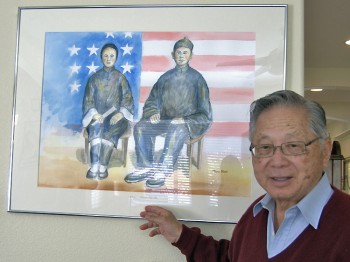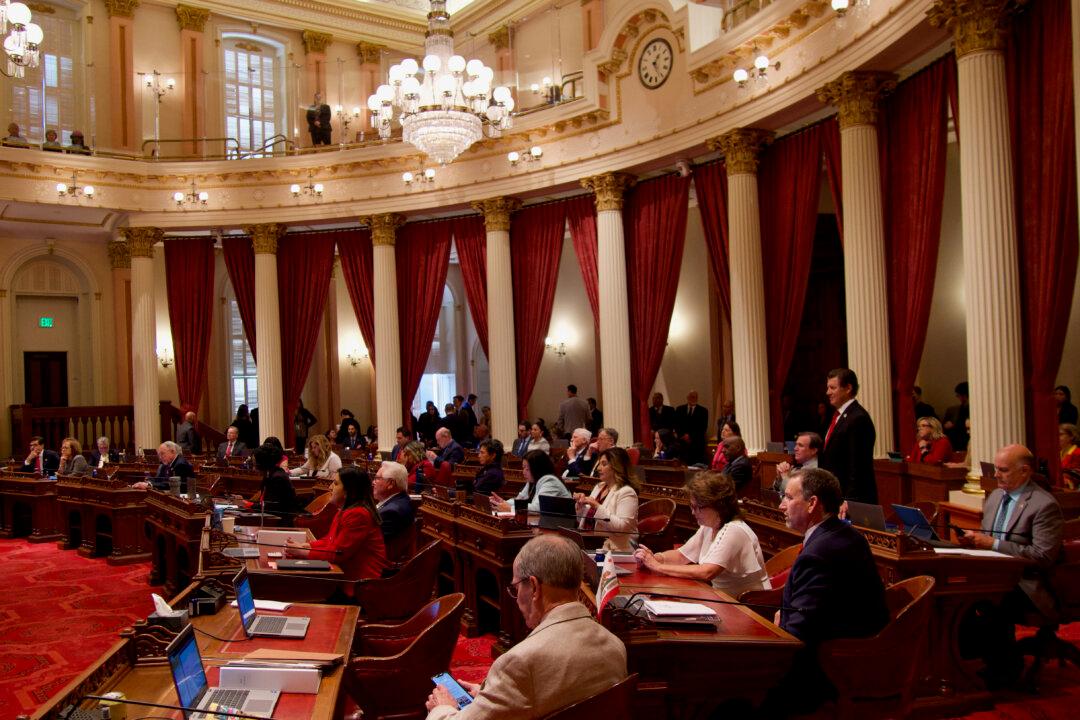Tom Hom, an Asian-American Legacy
A Second generation Chinese-American describes his early life and success as a businessman and politician in San Diego, California.

Tom Hom points to his painting of a couple of Chinese immigrants at the turn of the century. Jane Yang/The Epoch Times
|Updated:






